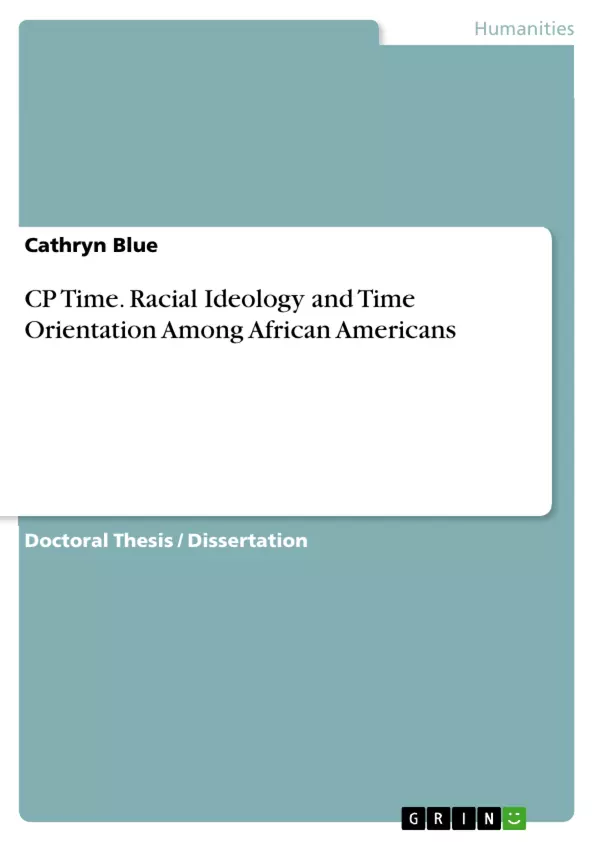Many psychologists agree that race is a socially created construct, used to categorize individuals into groups for social, political, and economical purposes. Despite its definitional ambiguity, race has a number of behavioral, affective, and cognitive implications within contemporary American society. This study seeks to provide evidence for the idea that the way that Black Americans view their racial group membership (racial ideology), is associated with how they view and organize time (time orientation). Thus, this study aims to investigate the relationship between racial ideology and time orientation. Furthermore, this study seeks to investigate the degree to which relationships between racial ideology and time orientation might be modified by self-construal.
Table of Contents
- Abstract
- Committee in Charge of Candidacy
- Dedications
- Acknowledgements
Objectives and Key Themes
This study investigates the relationship between racial ideology and time orientation among Black Americans. It explores how Black Americans' views of their racial group membership influence their perception and organization of time. The study also examines the potential role of self-construal in moderating this relationship.
- Racial Ideology
- Time Orientation
- Self-Construal
- Black American Identity
- Social and Cultural Influences on Time Perception
Chapter Summaries
This study examines the relationship between racial ideology and time orientation among Black Americans. It explores how Black Americans' views of their racial group membership influence their perception and organization of time. The study also examines the potential role of self-construal in moderating this relationship.
Keywords
Racial ideology, time orientation, self-construal, Black Americans, social construction of race, cultural influences on time perception.
- Citation du texte
- Cathryn Blue (Auteur), 2011, CP Time. Racial Ideology and Time Orientation Among African Americans, Munich, GRIN Verlag, https://www.grin.com/document/351627



